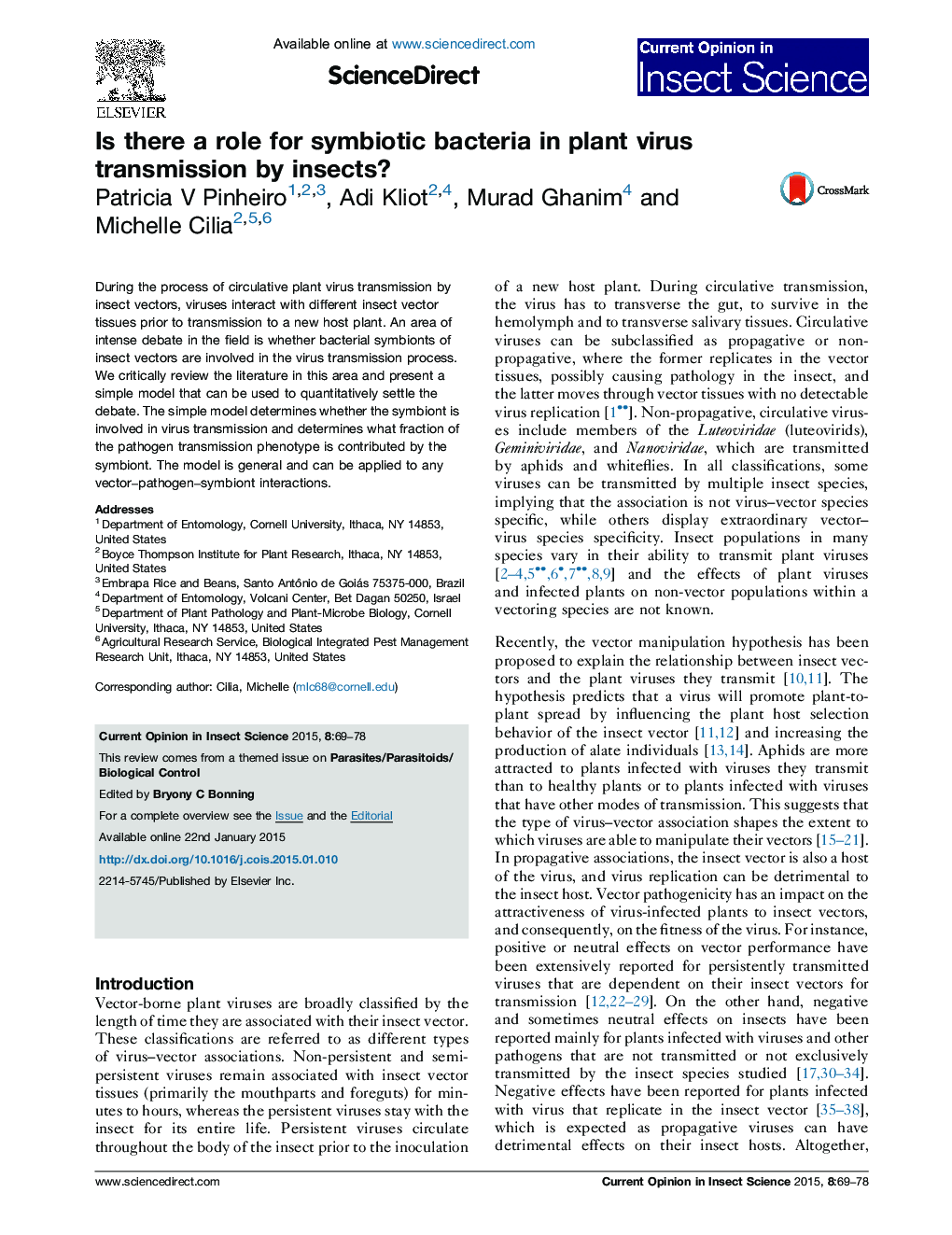| Article ID | Journal | Published Year | Pages | File Type |
|---|---|---|---|---|
| 4508239 | Current Opinion in Insect Science | 2015 | 10 Pages |
•Insect-borne, circulative plant viruses exploit existing pathways in their vectors to promote plant-to-plant spread.•Conflicting evidence exists regarding the role of insect bacterial symbionts in circulative plant virus transmission.•The involvement of GroEL in transmission is difficult to assess because GroEL antibodies cross-react and GroEL is a chaperone.•A simple test can determine the relative contribution of a bacterial symbiont to plant virus transmission by insects.
During the process of circulative plant virus transmission by insect vectors, viruses interact with different insect vector tissues prior to transmission to a new host plant. An area of intense debate in the field is whether bacterial symbionts of insect vectors are involved in the virus transmission process. We critically review the literature in this area and present a simple model that can be used to quantitatively settle the debate. The simple model determines whether the symbiont is involved in virus transmission and determines what fraction of the pathogen transmission phenotype is contributed by the symbiont. The model is general and can be applied to any vector–pathogen–symbiont interactions.
